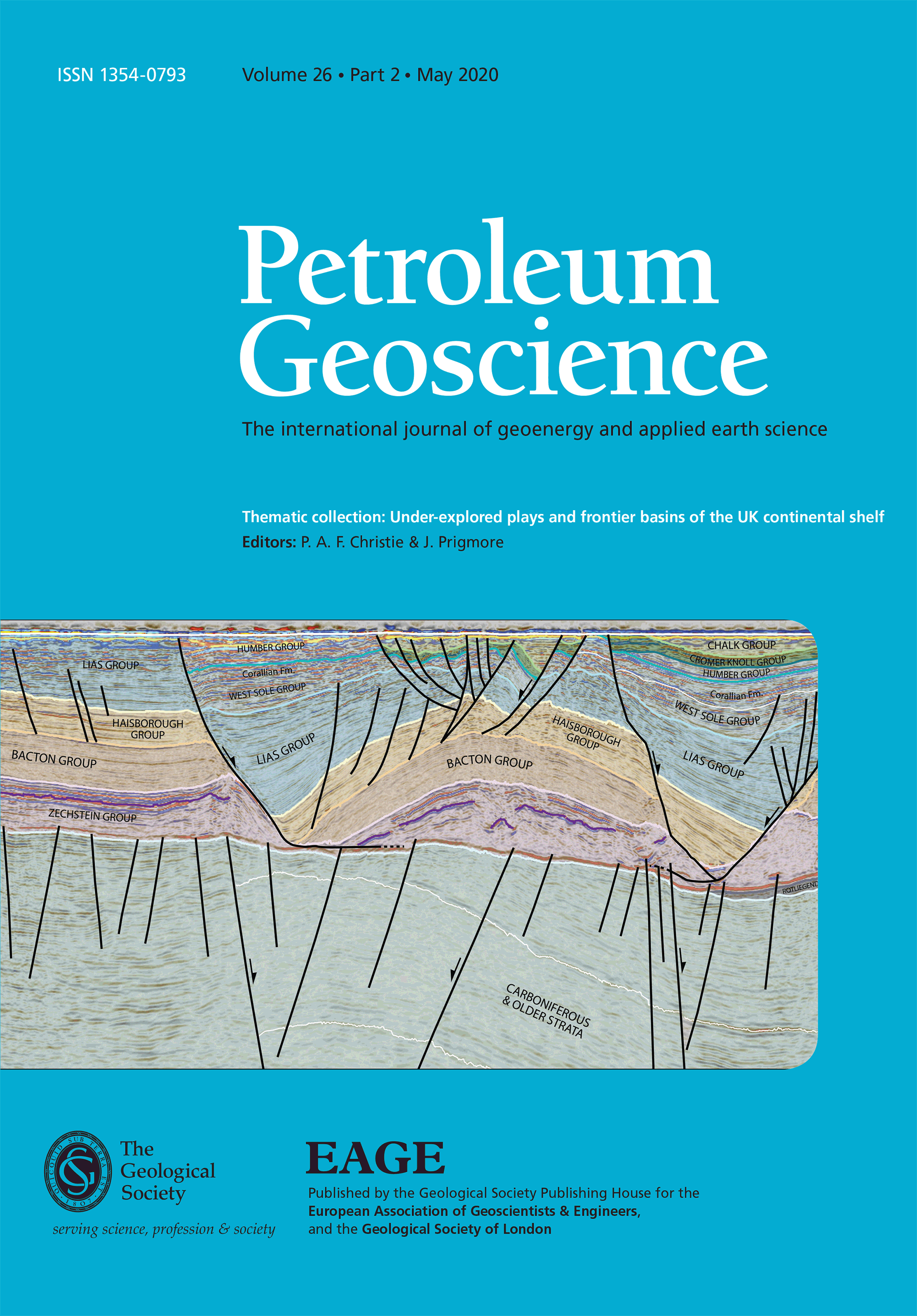
Full text loading...
Discovery of the Breagh gas field in the Southern North Sea (SNS) has demonstrated the potential that the Lower Carboniferous (Visean, 346.7–330.9 Ma) Farne Group reservoirs have to contribute to the UK's future energy mix. New biostratigraphic correlations provide a basis to compare Asbian and Brigantian sedimentary cores from the Breagh Field and age-equivalent sediments exposed on the Northumberland Coast, which has proved critical in gaining an understanding of exploration and development opportunities. Thirteen facies associations characterize the mixed carbonate–siliciclastic system, grouped into: marine, delta front, delta shoreface, lower delta plain and upper delta plain gross depositional environments. The facies associations are interpreted as depositing in a mixed carbonate and siliciclastic fluvio-deltaic environment, and are arranged into coarsening- and cleaning-upward cycles (parasequences) bounded by flooding surfaces. Most cycles are characterized by mouth bars, distributary channels, interdistributary bays and common braided rivers, interpreted as river-dominated deltaic deposits. Some cycles include rare shoreface and tidally-influenced deposits, interpreted as river-dominated and wave- or tide-influenced deltaic deposits. The depositional processes that formed each cycle have important implications for the reservoir net/gross ratio (where this ratio indicates the proportion of sandstone beds in a cycle), thickness and lateral extent. The deltaic deposits were controlled by a combination of tectonic and eustatic (allocyclic) events and delta avulsion (autocyclic) processes, and are likely to reflect a changing tectonic regime, from extension within elongate fault-bounded basins (synrift) to passive regional thermal subsidence (post-rift). Deep incision by the Base Permian Unconformity across the Breagh Field has removed the Westphalian, Namurian and upper Visean, to leave the more prospective thicker clastic reservoirs within closure.
Thematic collection: This article is part of the Under-explored plays and frontier basins of the UK continental shelf collection available at: https://www.lyellcollection.org/cc/under-explored-plays-and-frontier-basins-of-the-uk-continental-shelf

Article metrics loading...

Full text loading...
References


Data & Media loading...

